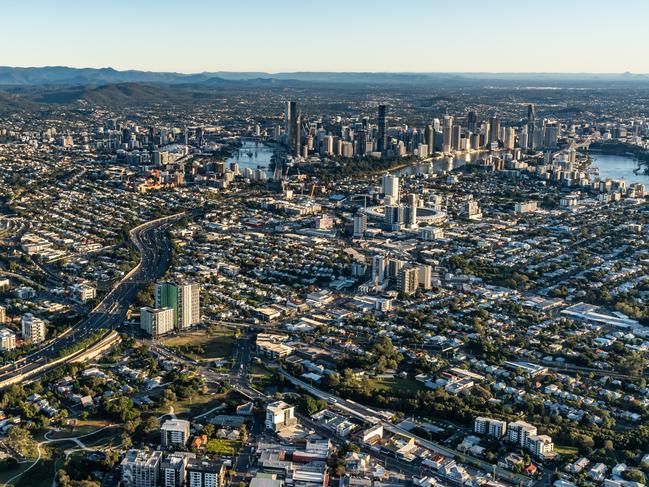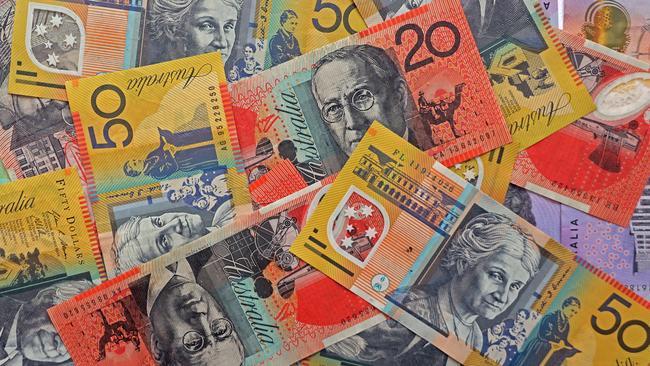Brisbane suffers highest CPI increase as inflation stays stubbornly high
Brisbane has suffered the highest cost-of-living increase in the nation, as Queenslanders fork out more for electricity, health and housing.
QLD Politics
Don't miss out on the headlines from QLD Politics. Followed categories will be added to My News.
Brisbane has suffered the highest cost-of-living increase in the nation, with new quarterly figures showing Queenslanders forking out more for electricity, health and housing.
Australian Bureau of Statistics data revealed Brisbane recorded the highest Consumer Price Index rise of all capital cities for the March quarter – up 1.9 per cent – compared with the national average of 1.4 per cent.
Brisbane’s housing price rise of 3.4 per cent was almost double those of the second highest cities – Sydney and Hobart at 1.9 per cent – with the rise in education costs (7.4 per cent) and health (5.4 per cent) also the highest in the country.
Brisbane’s annual inflation rate of 7.4 per cent was also above the national average, which has dropped from 7.8 to 7 per cent.
Federal Treasurer Jim Chalmers said the data captured the impact of cost-of-living pressures affecting Australians, and said it “reflects the complex and confronting times we are in”.
“While inflation is still unacceptably high, we welcome that some price pressures have started to ease,” he said.
“The drivers of the moderation in inflation were lower fuel prices from previous war-driven highs, easing vegetable prices from the floods and easing growth in the cost of new dwellings.
“That’s why the upcoming May Budget will strike the right balance between dealing with the immediate challenges in our economy and laying the foundations for a stronger, more secure economy that better safeguards us against global shocks.”
ABS head of price statistics Michelle Marquardt said inflation had slowed in the March quarter.
“While prices continued to rise for most goods and services, many of these increases were smaller than they have been in recent quarters,” she said.
The data, released on Wednesday, confirmed expectations inflation had peaked when it hit its highest levels since 1990 of 7.8 per cent in the 12 months to December.
Mr Chalmers warned that while inflation may be moderating, it was expected to remain high “for longer than we’d like”.
“We understand that Australian households and small businesses are still under the pump,” he said.
“Cost-of-living pressures are still coming at us from around the world and they are still being felt around the kitchen tables of this country.”

Despite the easing, inflation remains well above the Reserve Bank’s target rate of 2 and 3 per cent and will be a key talking point when the board meets next week.
Last month, the central bank kept the cash rate on hold for the first time in nearly a year at 3.6 per cent to give the board more time to assess the impact of the 10 successive rate hikes.
Sean Langcake, head of macroeconomic forecasting at BIS Oxford Economics, said the “uncomfortably high” data suggested another rate rise.
“Today’s data were broadly in line with our expectations and the RBA’s most recent forecasts. Headline inflation has peaked and weaker tradables inflation will contribute to slower inflation over the rest of 2023,” he said.
“But we think there is enough momentum in core (inflation) and services inflation to warrant tighter policy settings, and maintain our expectation for another rate hike in May.”
Gas and other household fuels (14.3 per cent), medical services (4.2 per cent) and tertiary education (9.7 per cent) all experienced steep jumps in prices over the quarter.
Strong demand for travel and accommodation over the school holiday period and the return of major events (4.7 per cent) was also a main contributor.

Ms Marquardt said the rises in education and medical costs were expected as tertiary fees are indexed and GPs review consultation fees and private health insurance rise premiums.
New dwellings (up 12.7 per cent), electricity (15.5 per cent) domestic holiday travel and accommodation (25 per cent) were the most significant contributors to annual inflation.
The price falls in furniture, household appliances and clothing, as well as the easing of automotive fuel prices in recent quarters helped with the softening of the annual rate.
However, Ms Marquardt raised concerns about the steep increase in the price of services.
“Annual inflation for services was 6.1 per cent, up from 5.5 per cent in the December quarter and is the highest since 2001,” she said.
The ABS’ monthly indicator, also released on Wednesday, moderated to 6.3 per cent over the 12 months to March, from 6.8 per cent over the year to February.
Originally published as Brisbane suffers highest CPI increase as inflation stays stubbornly high


